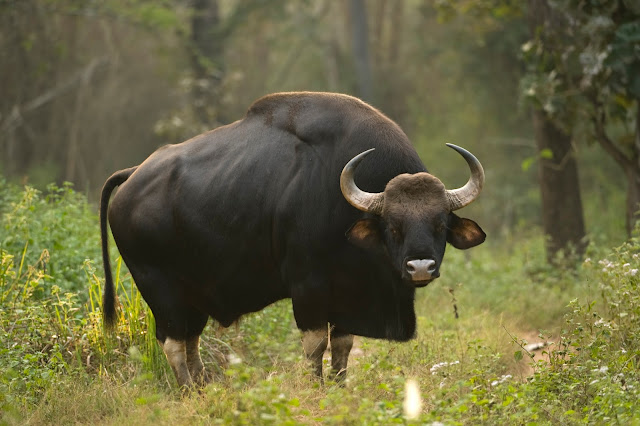Bengal Slow Loris - India's Unseen Primate
But then my one friend on Facebook; upload a photo of Slow Loris - In Indian Rain forest in our Facebook group "Wild Life".
Then I realize, India has so many animals, Birds, Reptiles, and Insects that people even don't know their name or their existence on our planet Earth.
So now our Wildest Safari is going to see some unseen, rare animals that routing people even don't known their name.
Bengal Slow Loris
Slow Loris is actually a primate. Now one question is raised that What is Primate?
Answer is : Primate, in Zoology, any mammal of the group that includes the Lemurs, lorises, tarsiers, monkey, apes and humans. The order Primates, with its 300 or more species, it is the third most diverse order of mammals after rodents and bats.
Introduction part
- The Bengal Slow Loris or Northern Slow Loris is a strepsirrhine primate of slow loris native to the Indian Subcontinental and Indochina.
- Its geographical range is larger than that of other slow loris species.
- Phylogenetic analysis suggests that the Bengal Slow Loris is most closely related to the Sunda Slow Loris.
Physical Characteristics
- It is the largest species of slow Loris, measuring 26 to 38 cm (10 to 15 in ) from head to tail and weighting between 1 to 2.1 kg ( 2.2 to 4.2 lb).
- It has a wet nose, a round head, flat face, large eyes, small ears, a vestigial tail, and dense, woolly fur.
- The toxin it secretes from its brachial gland ( a sent gland in its arm ) differs chemically from that of other slow loris species and may be used to communicate information about sex, age, health and social status.
Population and Location
- Estimated numbers left in wild : Perhaps 2,000 to 16,000 - exact numbers are unknown.
- Location : The Bengal Slow Loris is found in the north-east corner of India, also in Bangladesh, Myanmar, Thailand, China, Vietnam and Cambodia.
Reproduction
- The Bengal Slow Loris is not a seasonal breeder. Females in an estrous cycle attract males with a loud whistle.
- Females reproduce every 12-18 months and have six-month gestation.
- Because they are not seasonal breeders, females could become pregnant when their offspring are 6 months old, making possible for females to produce two offspring per year.
- Females typically give birth to single offspring, although twine rarely occur.
- The mother carries her young about three months before they become independent, although they may be temporarily left on branches while mother searches for food.
- Sexual maturity is reached at approximately 20 months of age.
- The species is known to live upto 20 years.
Bengal slow loris conservation
- In response to the high levels of trade in loris species, the Bengal slow loris was transferred in 2007 from the Convention on International Trade in Endangered Species (CITES) Appendix II, where commercial trade is permitted, to Appendix I, making all international trade in this species illegal.
- In addition to this international protection, the Bengal slow loris is protected by national law in the countries in which it occurs, although enforcement is lacking in many regions. The same is true of Bengal slow loris habitat, which, despite having national reserve or conservation area status throughout much of this species’ range, is still being degraded by illegal logging activities.
- Insufficient data and a belief that there was only a single species of slow loris has meant that, in the past, population assessments may have significantly overestimated the Bengal slow loris population. Now classed as a separate species, and with recent surveys indicating that in some regions it is severely threatened, it has been classified as Vulnerable by the IUCN.
- This should hopefully promote increased efforts to monitor and understand the Bengal slow loris in the wild and, in turn, encourage efforts to protect and conserve it .





Comments
Post a Comment